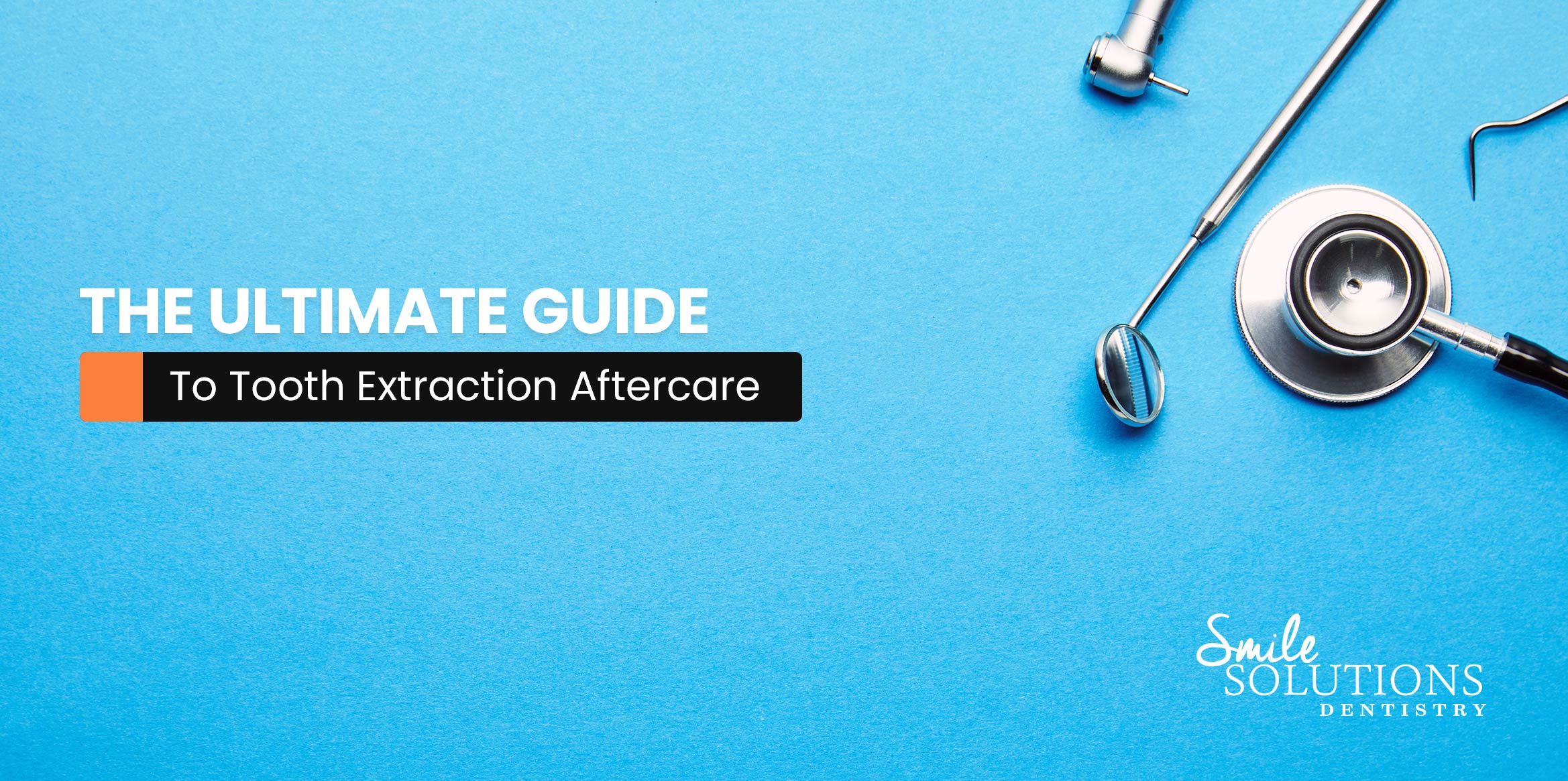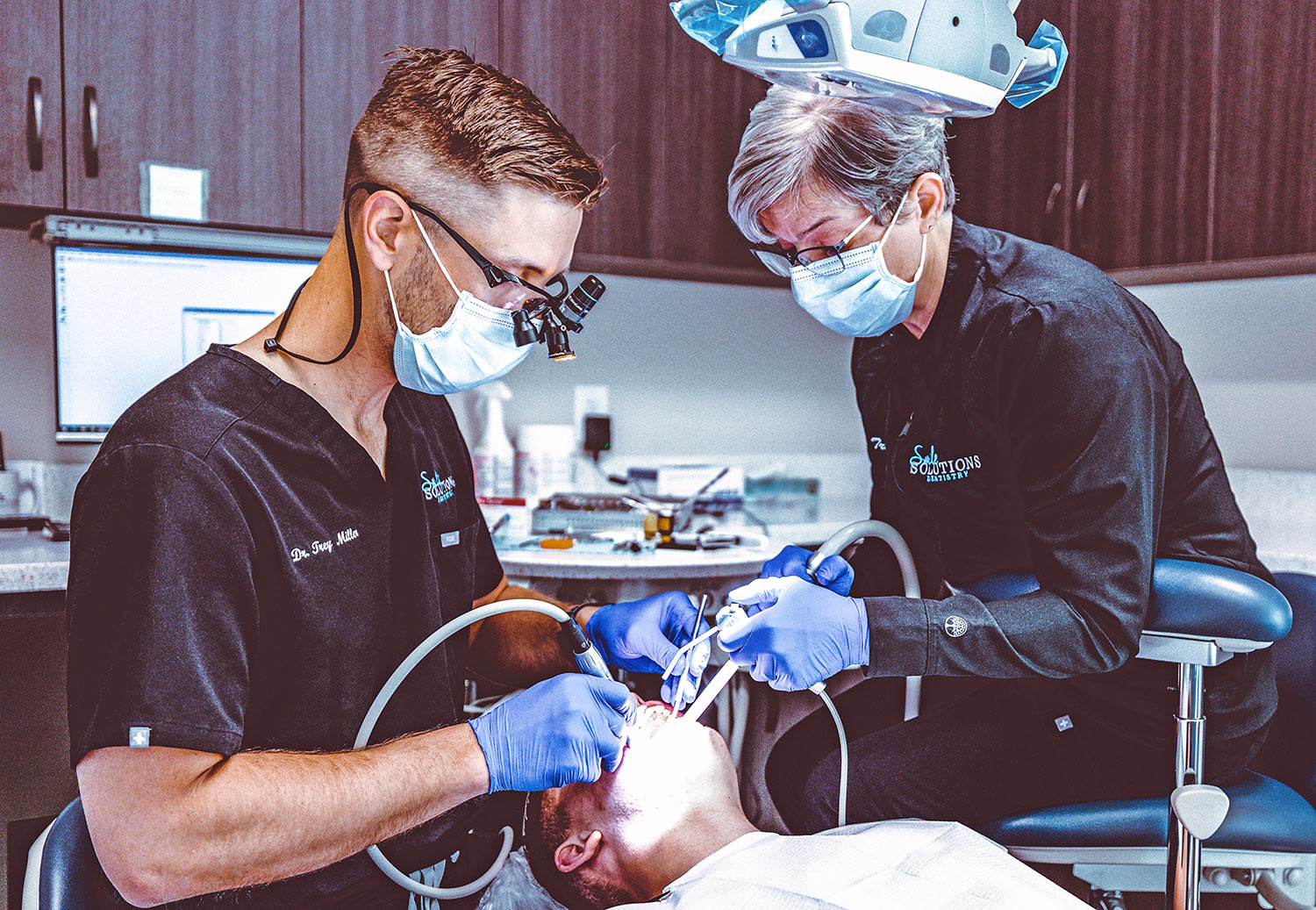The Ultimate Guide to Tooth Extraction Aftercare
A Tooth extraction is a dental procedure that involves the complete removal of a tooth from your mouth. This can be necessary for many reasons: from the overcrowding of teeth to tooth decay.
A tooth extraction procedure is performed by a specialized dentist in a dental clinic, who follows up with detailed post-operative instructions for quick and simple healing.
During your appointment, the dentist will give you localized anesthesia in the area around the tooth. You won’t feel any pain and discomfort during any part of your procedure.
Depending on which tooth was extracted, a patient might need stitches. After the removal, the dentist will place gauze over the area of extraction to help control bleeding and promote clotting.
Changes in the Procedure
Sometimes if a dentist is unable to see the tooth—if it broke off from the gum, or didn’t erupt, or is impacted in any way—you should consider a surgical extraction.
At this point, your dentist or surgeon will make a small incision in your gums and gently remove the tooth. Sometimes he might have to remove it in parts for safe and effective removal of the impacted tooth. There’s no need to worry because the whole area will be numb. The main differences between a surgical and a simple extraction is a surgical extraction is more complicated and typically requires the slight removal of bone to allow the tooth to come out.
Why Are Teeth Removed?
If a patient has bad oral hygiene or genetics, their teeth can easily get damaged or decayed. If a tooth gets so damaged that a filling, cap, or a crown can’t help, a tooth extraction is inevitable. A patient might need an extraction if they:
• Gum disease
• Severe infections or decay in one or more teeth
• Damaged teeth from trauma
• Crowded teeth
• Tooth infection caused by medication or therapy
• Compromised immune system that can cause infection
• Impacted wisdom teeth
• Orthodontic necessity for proper bite and teeth alignment
Possible Side Effects
Because this is a type of surgery, it is essential to be aware of side effects that can occur:
• Bleeding
• Swelling
• Mild to moderate discomfort/pain
• Tender mouth
• Infection (rare)
• Discoloration of the face
• Dry socket
Pre-Op Overview
Before you undergo this procedure, you have to provide your dentist with relevant medical information because they can affect the procedure. Some medical conditions that can affect a tooth extraction are heart defect, liver disease, artificial joints, taking blood thinners, have diabetes or if you have a compromised immune system. When you provide your dentist with such information, it’s easier to avoid any potential problem ensuring a quick and speedy recovery. Avoiding these important questions can put you at risk for serious life threatening conditions.
Post-Op Overview
The aftercare for a tooth extraction can vary depending on which tooth was taken out, the number of teeth that got taken out, whether a bone graft was placed and the patient’s overall health. After tooth extraction, the most important aspect of this period is to allow the blood clot to form and keep it isolated.
Immediately After Tooth Extraction
The first thing you should do is bite firmly on the gauze pads to stop the bleeding. At Smile Solutions Dentistry, a dentist in Harrisburg, NC, we recommend changing the gauze before you leave the office, but you might need to change it a couple of times at home. We will give you further instructions on how to do so if that is necessary for your case. You should remember that you will experience a funny feeling on your lips, tongue, or cheeks because of anesthesia, so be careful not to bite them and hurt yourself.
Two Days After
The first days of your tooth extraction aftercare are crucial for your recovery. The main focus should be allowing a blood clot to form and taking care of your mouth hygiene during these days. You can expect low-level bleeding up to 24 hours after an extraction. That is perfectly normal. However, if you experience active bleeding beyond 24 hours, it’s time to call your dentist or possibly look for emergency care or emergency dental care. TIP: Try biting firm constant pressure onto a damp tea bag for 15-20 minutes. The acid in the tea bag can oftentimes stop the bleeding.
Additional tips you should follow for the first two days post-procedure:
Get Plenty of Rest
Expect to feel tired and a bit strange, so take 24 hours off and get well-rested.
Change Gauze
It is important you leave the gauze your dentist puts on the extraction site before you leave the office for at least an hour. After that, a clot has already formed, so a gauze is not necessary. Following your dentist’s instructions from this point forward.
Avoid Rinsing
It can be highly tempting to rinse or gargle your mouth after the procedure because of all the strange taste and smell, but the area is still clotting, and this deed will affect the clot’s formation and prolong your healing process. Allow the area to clot unerupted for 3 days following your procedure. A soft diet and easily dissolvable foods are recommended during these first 3 days.
Don’t Use Straws
Straws can put a lot of pressure on the wound and get the clot easily dislodged, so it’s best to avoid them for 7 days.
Don’t Spit
Spitting also creates pressure in the mouth and affects the clot, so it’s best not to do it.
Don’t Smoke or Consume Alchohol
Smoking creates the same pressure as drinking through the straw, while alcohol can delay the healing process of the newly forming tissue over your extraction site. Smoking increases heat and reduces blood flow to the site, increasing risks for potential complications..
Avoid Blowing Nose/Sneezing
If a surgeon removes a tooth from the upper half of the mouth, blowing your nose creates pressure in your mouth that can dislodge the developing clot. If possible, avoid blowing your nose and sneezing.
Consider Pain Relievers
When numbness goes away, you’ll start to experience the pain. Depending on your pain threshold, you might want to take some Advil/Ibuprofen/Motrin, which will help reduce the pain and inflammation. The best combination of pain reducing medication for a dental extraction is 600mg Ibuprofen + 500mg Tylenol given every 8 hours.
Use Cold Compressors
Placing an ice pack on the area for 10-20 minutes at a time can reduce swelling and alleviate pain.
Elevate Your Head
Lying too flat may allow blood to pool in the head and prolong healing time so try elevating your head (even when sleeping; use extra pillows to make yourself comfortable and still elevate the head).
Days Three to Ten
After the clot is finished forming, it’s vital not to damage it. You should also follow some extra tips for maintaining your oral hygiene:
Rinse with Saltwater
When the clot-forming is finished (after day 3), and securely in place, you should gently rinse your mouth with a warm solution of water and salt. This solution will help kill bacteria in your mouth and prevent any infections from forming. It will also physically remove food and debris from the extraction site.
Avoid Hard Food
It would be best to continue to eat soft foods during the whole healing process. Tomato or potato soup (DO NOT EAT: chicken noodle soup), yogurt, applesauce, eggs, peanut butter crackers, peanut butter sandwiches and similar foods are great to consume during this period. Also, avoid food that needs a lot of chewing and is likely to get trapped in the empty socket.
Floss and Brush
Many ask when I can brush my teeth after tooth extraction. Feel free to brush right away avoiding the area around the extraction site. Gently spit after brushing to avoid dislodging your blood clot. Flossing can continue as soon as it doesn’t hurt. It’s best to floss away from the tooth for the first week.
Aftercare for Wisdom Teeth
Many patients have their wisdom teeth removed at a young age, even before they erupt and when their recovery is much quicker. But for those who didn’t have them removed at a young age, the healing time for wisdom tooth extraction is longer than for the regular tooth. But the aftercare is similar to other tooth extractions aftercare. However, dentists will use different techniques that promote healing and provide the patient with additional tips to aid in healing.
Aftercare for Child Tooth Extractions
The procedure itself is no different from the procedure for adults except. The healing process is also similar or oftentimes easier for children due to their quickly growing and healing oral tissues. Parents will have to closely monitor the child’s healing process and oral health and ask them questions about their feelings and symptoms, such as pain or bleeding.
When to See a Dentist
A typical recovery takes up to ten days, depending on the person’s care and behavior after the procedure. Signs that show that you need to see a dentist are:
• Pain and swelling that doesn’t go away
• Bleeding that doesn’t improve over time
• A high fever
• Vomiting or nausea
• Unpleasant smelling or tasting drainage
Final Thoughts
The tooth extraction procedure is a routine procedure, so there’s no need to worry. It’s essential to be well informed and choose a dentist that will devote his time to your case.
Listen to your dentist, follow all of their instructions for your tooth extraction aftercare, and don’t feel embarrassed or shy to ask whatever questions you have that you did or didn’t understand. For all of your questions and additional information, we’re here to provide them for you, so feel free to schedule an appointment during our working hours. We’re waiting for your call.



